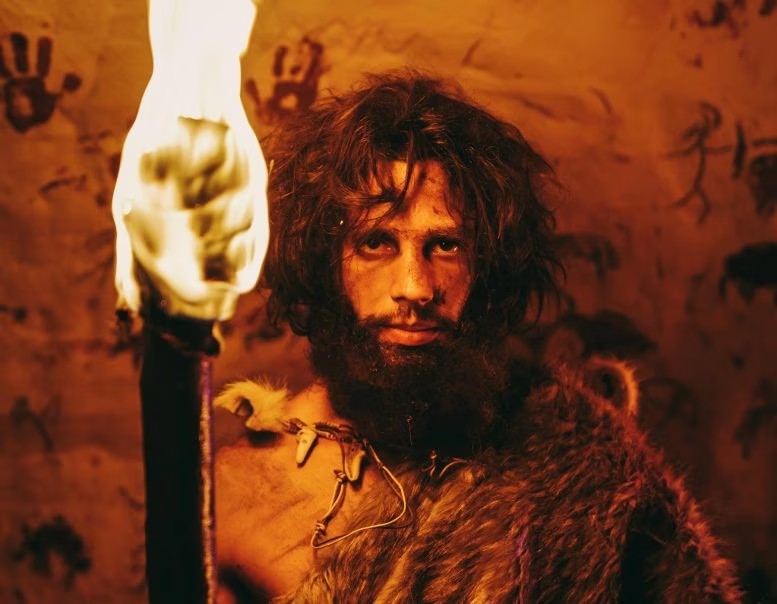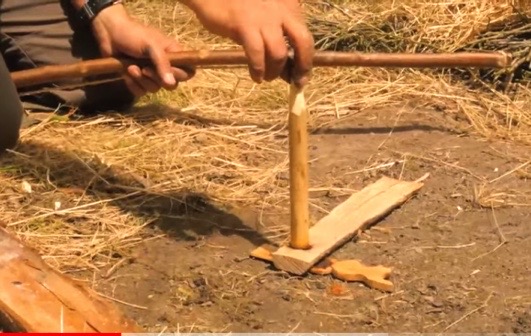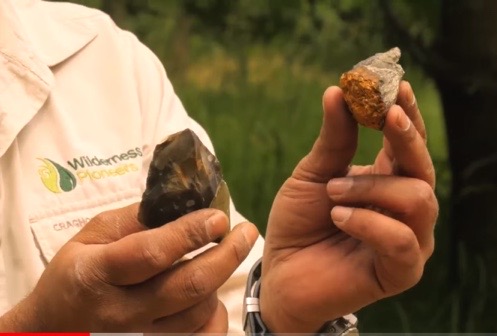
|
Mastering Fire |
Mastery of fire was a crucial step in the evolution of our species. Fire provided protection against predators, allowed cooking to make foods more digestable; and, most important, provided the warmth needed to survive in northern latitudes. This allowed early man to settle all over Europe, migrate into Siberia and cross a dry Bering Strait into the American continent. Fire was also crucial to many other developments: it would be used to hollow out tree trunks and make dug-out canoes and, later, would allow pottery and the extraction of metal... thus ending the Stone Age.
Although hominins probably used fire as early as 1 Mya, the ability to start fires came much later, around 125 Kya [ Wikipedia ].

History
Mastery of fire was not a single pivotal event; rather, it was a convoluted process that took place over a long period of time.- The first stage involved "foraging": following bush-fires to find resources like birds eggs or burnt small animals, made more visible by fire and more digestable from cooking. Many Apes already do this.
-
Then, obtaining fire from lightning strikes and transporting it back for campfires. A major innovation would be the use of slow burning fuels, like dung, to maintain fire over extended periods of time. Probably ~ 1Mya.
- Finally, the ability to create fire on demand, generally with wood friction devices, would only arise around 125,000 years ago.
Many historians assumed that Neanderthals could start fire during their occupation of Europe (from ~ 200 Kya to 40 Kya); this, because they survived two glacial periods and melted tar to fix stone points to their spears. But a recent article concludes that - like in the film Quest for Fire - Neanderthals could only maintain fire but not start it. The authors suggests that Neanderthals 1) could stand some cold with a compact hairy body and 2) took refuge in Southern Europe when necessary.
Widespread mastery of fire dates to approximately 125,000 years ago, and it appears that Homo Sapiens was responsible. [Ref]
Techniques
There are 2 basic techniques:
- Friction: Rotating a wood drill in a notch on a base of softer wood. At the start, rotation grinds down the base and creates a heap of hot wood powder; then, by increasing the pressure and speed, enough heat is generated to light the powder into a self-sustaining glowing ember. The final step is to place this ember in a nest of kindling and blowing on it until the nest bursts into flames.
- Sparks: Like the modern BIC lighter, scraping flint on pyrites to produce hot sparks. The key here is the use of highly flammable tree fungus which is ignited by the sparks to produce embers that can be coaxed into flames. Later, in the metal age, Egyptians start using iron and flint.
Videos from the Ashmolean Museum at Oxford University.
More Videos- Fire Plow, 5 min.
- Bamboo Fire Saw, last of 4 different ways
- Inuit fire drill,
At the end of old film on Inuit fishing weir. One man powers the drill and the other bears down with a wood cap held in his teeth - Modern demo of Inuit technique
References
- Who started the First Fire: Sapiens, Anthropology Magazine
- Discovery of fire by humans, Royal Society
- Control_of_fire, Wikipedia


